By Rob Miller, IBO Research Biologist, GIS Specialist
We would like to introduce you to North America’s newest bird species… the American Goshawk (Accipiter atricapillus)!
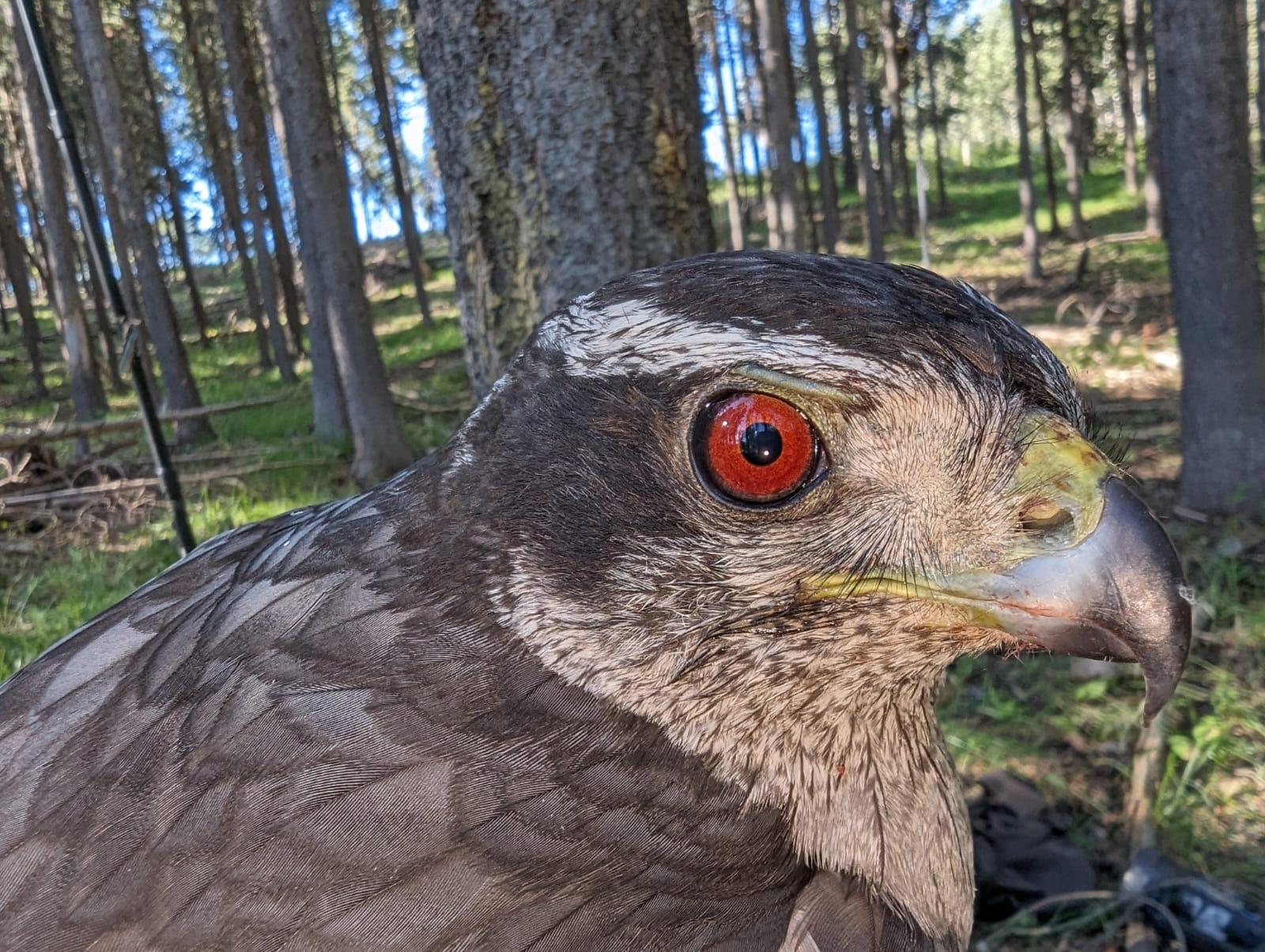
Wait…what? Yes, sort of…
The Taxonomic Split and its Evidence
In July of this year, the American Ornithological Society decided to go along with the overwhelming evidence that most goshawks in North America are not closely related to most goshawks in Europe and Asia, voting to split the Northern Goshawk into the American Goshawk and the Eurasian Goshawk (Accipiter gentilis). The evidence includes plumage, vocalizations, behaviors, and most convincing of all, high resolution genetics.
It was long past time to make the split.
The genetic evidence includes such observations as the Black Goshawk (Accipiter melanoleucus) being more closely related to the American Goshawk than is the Eurasian Goshawk. Also more closely related, three other goshawk species. The three goshawk subspecies in North America have all been moved under the American Goshawk (A. a. atricapillus [most of NA], A. a. apache [AZ and NM], and A. a. laingi [British Columbia]).
Our Role in the Rising Interest
Unrelated to the taxonomic split, IBO’s goshawk programs have been seeing a growth spurt. We have worked with goshawks off and on for 30 years, but more consistently over the past 13 years. We have maintained our core work in the Minidoka Ranger District of the Sawtooth National Forest, but have extended our consulting efforts on the species out to the full Intermountain Region of the Forest Service.
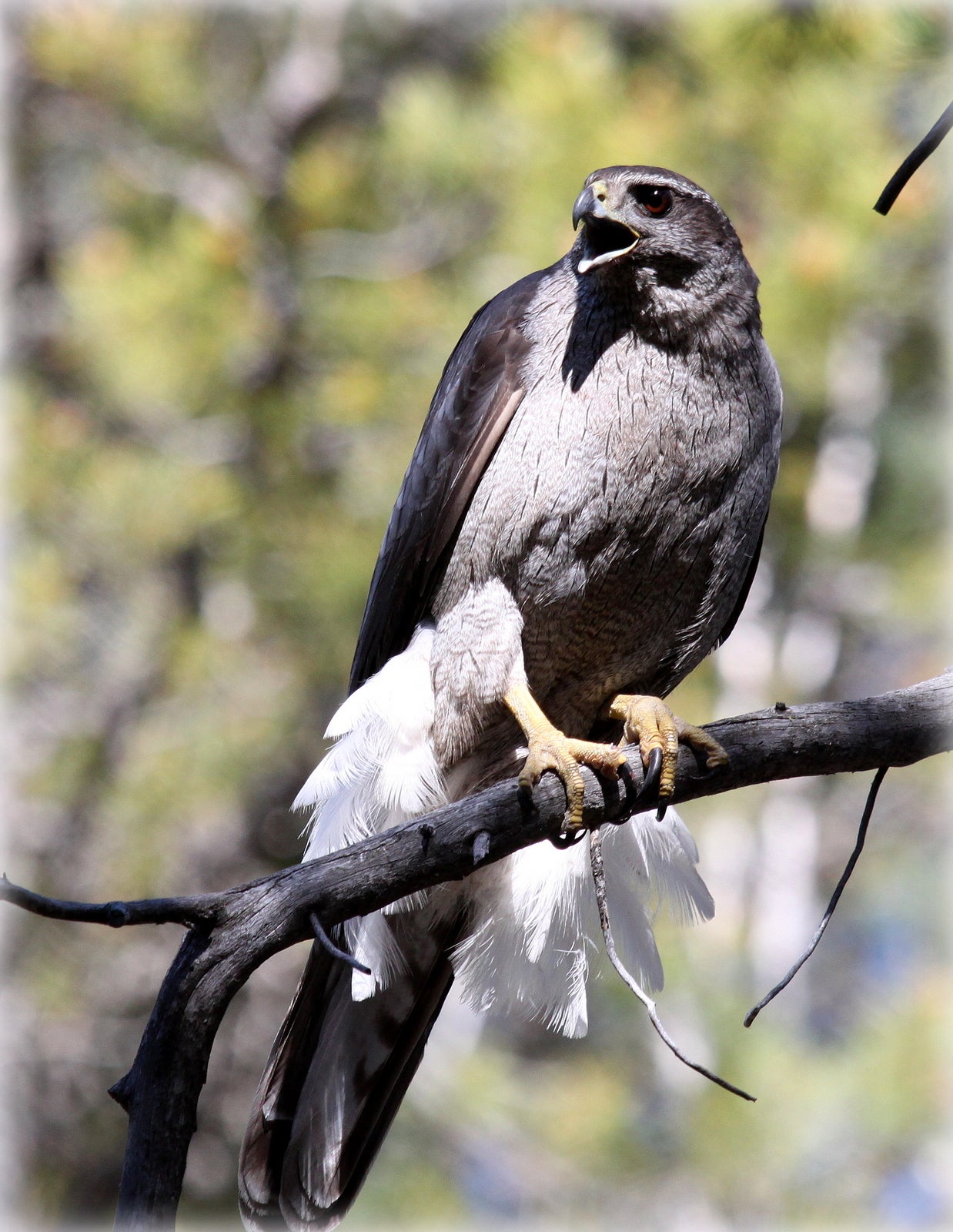
In each of the past few years we have extended our habitat modeling expertise out to new forests including the Targhee NF and the Uinta-Wasatch Cache NF. We have just signed a new agreement with the Caribou NF, and are close to adding three more forests in the Pacific Region. This last year we added a fieldwork component in the Uinta-Wasatch-Cache NF and next year we expect to add a few more field projects into the mix.
Leading Research Team
With our Research Lead, two graduate students, and up to eight technicians next year, we have cemented ourselves as a leading research team on the species in western North America.
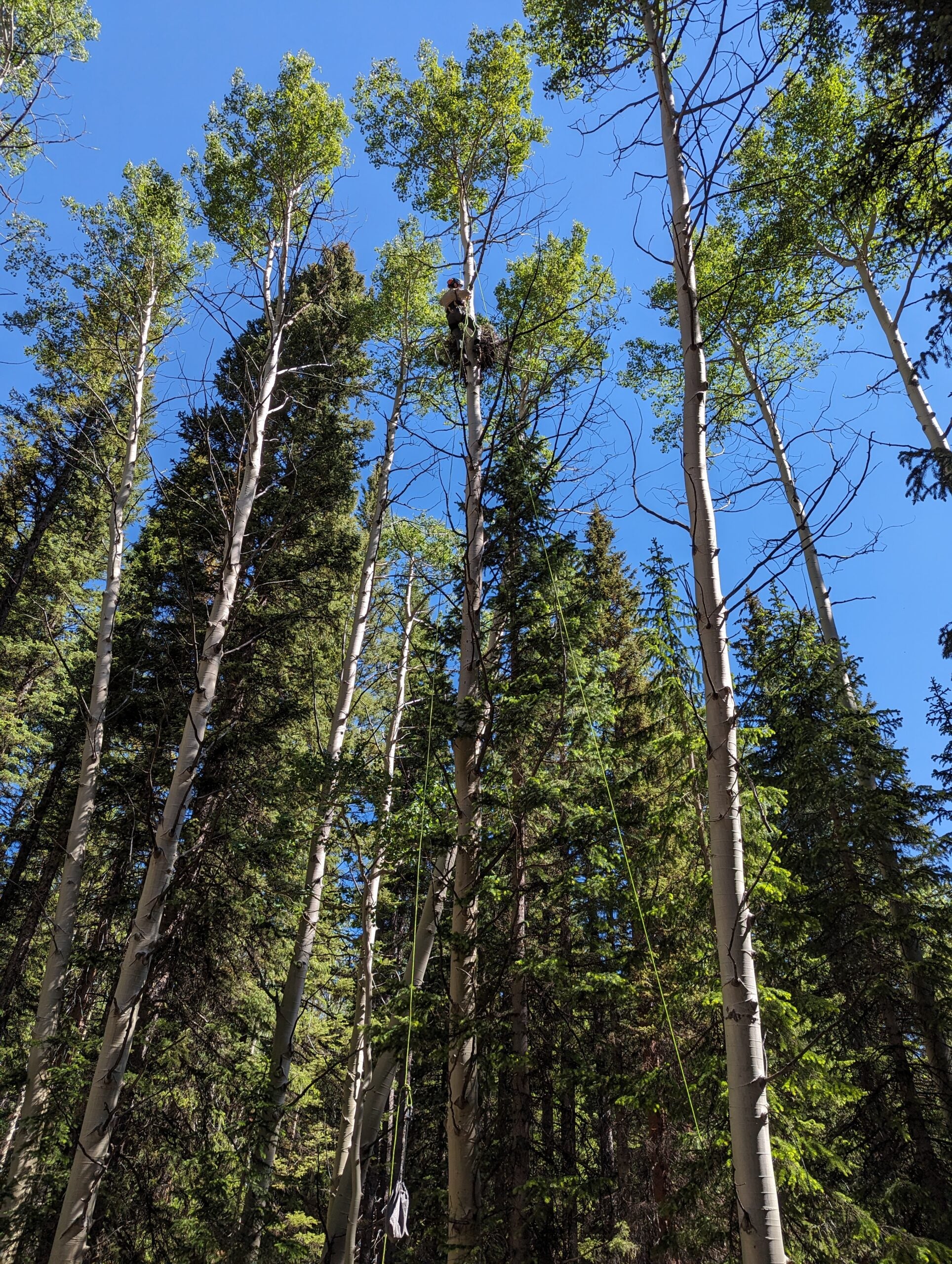
Goshawks as Ecosystem Health Indicators
So why the renewed interest in goshawks? They continue to be the best indicator of ecosystem health in most of our forests. With an increase in forest health issues (pine beetle outbreak, spruce beetle outbreak, higher than expected tussock moth mortality, sudden aspen death syndrome), increase in fire severity, climate change (amplifies all issues), and greater Forest Service investment in reducing fuels, the Forest Service needs a champion for the ecosystem functions that the goshawks provide. We are happy to engage with them in this role. #kakkakkak
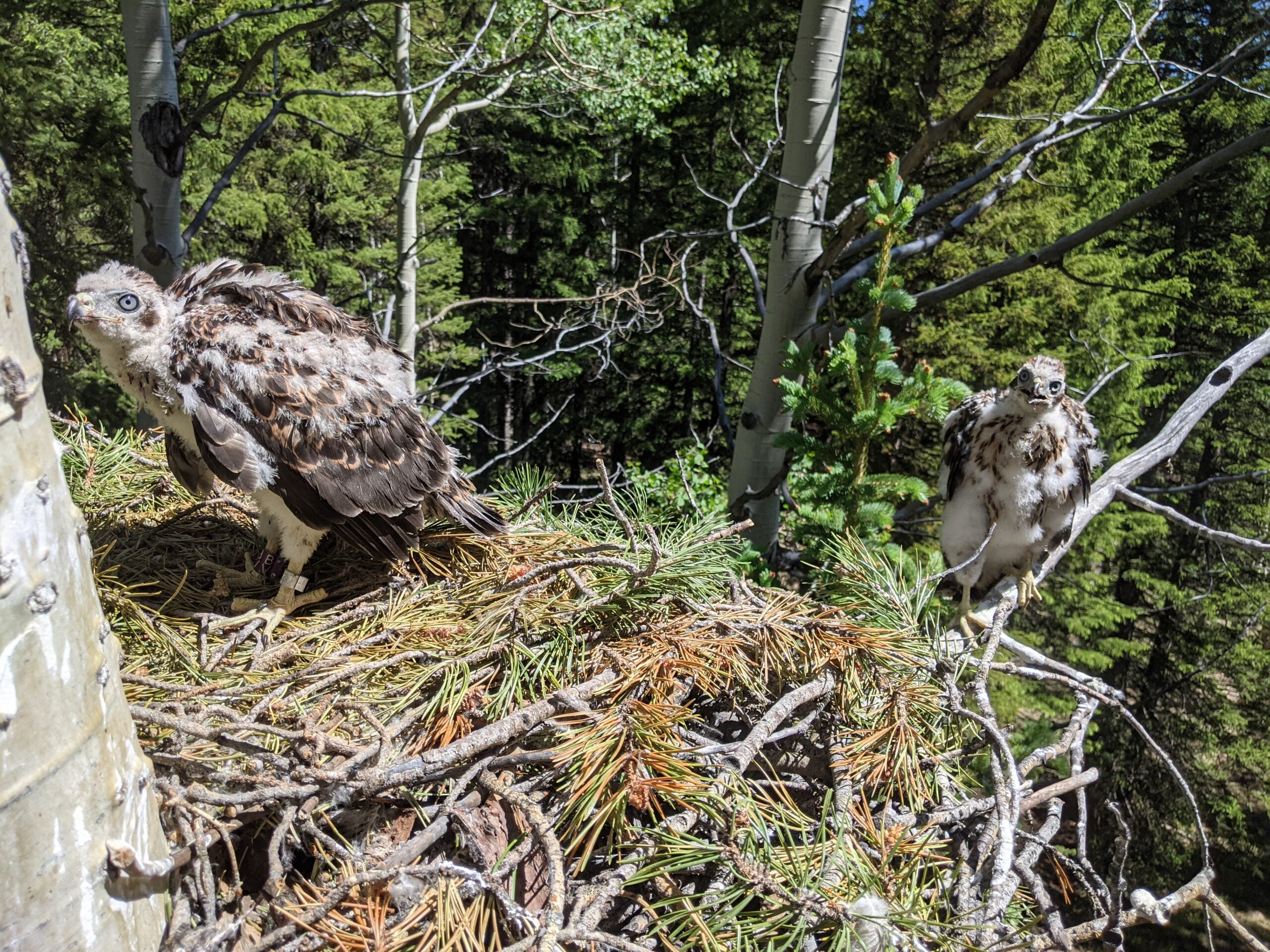
You Can Help Make an Impact on Goshawk Conservation
We need your help to continue our American Goshawk research! Check out our latest fundraiser by heading over to IBO’s Bonfire shop, where you will see our newest (and currently most popular!) T-shirt design: “The American Goshawk Project”! It features artwork by the very talented Emma Regnier (@falcofous on Instagram).
Proceeds from this fundraiser will help offset the significant costs of field equipment like transmitters and thermologgers. Learn how this important scientific equipment will be utilized next season by Jessy Wilson, Boise State M.S. Raptor Biology student, in her newsletter article below.

Announcing the American Goshawk Project!
By Jessy Wilson, Boise State M.S. Raptor Biology student
Hi! I am so excited to be joining IBO’s Team Goshawk as a new graduate student! I will be studying the newly renamed American Goshawk, with a special focus on the ecology of breeding goshawks. Goshawks in the IBO study area (southern ID, northern UT) have been reflecting trends of population declines as well as declining rates of occupancy and productivity. Additionally, the rate of breeding territory turnover has increased and is above the long-term average.
This suggests the goshawks in these areas are experiencing abnormal population changes.
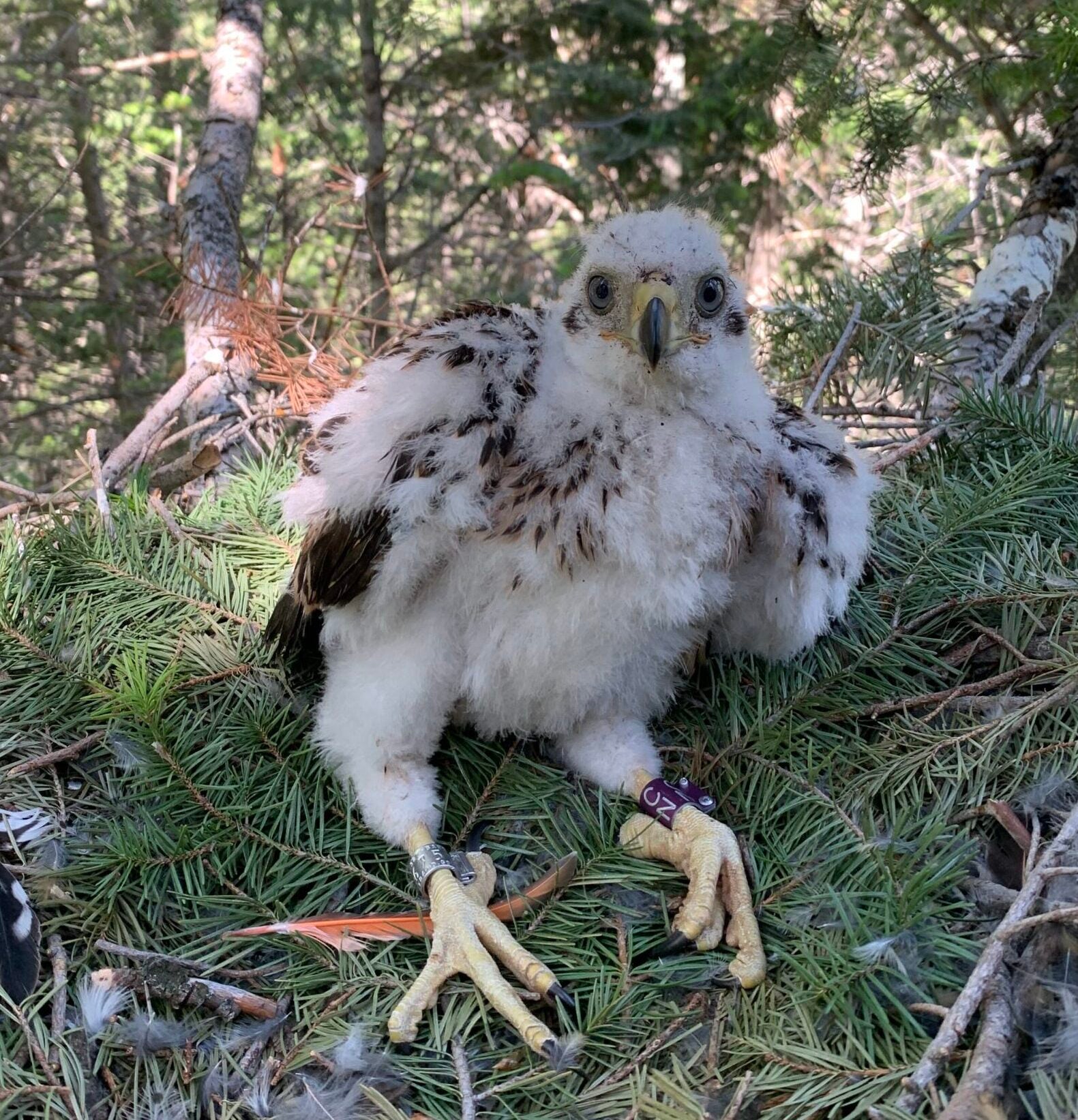
Even with IBO’s research on American Goshawks over the past several years, we still don’t know where goshawks travel when they leave a previously occupied territory (i.e., territory turnover event), how their breeding success compares in new locations, and how the habitat and landscape characteristics compare between known and unknown sites.
As a new Master’s student in Boise State’s Raptor Biology Program, I will be addressing these research questions and more with Jay Carlisle, Rob Miller, and the Intermountain Bird Observatory.
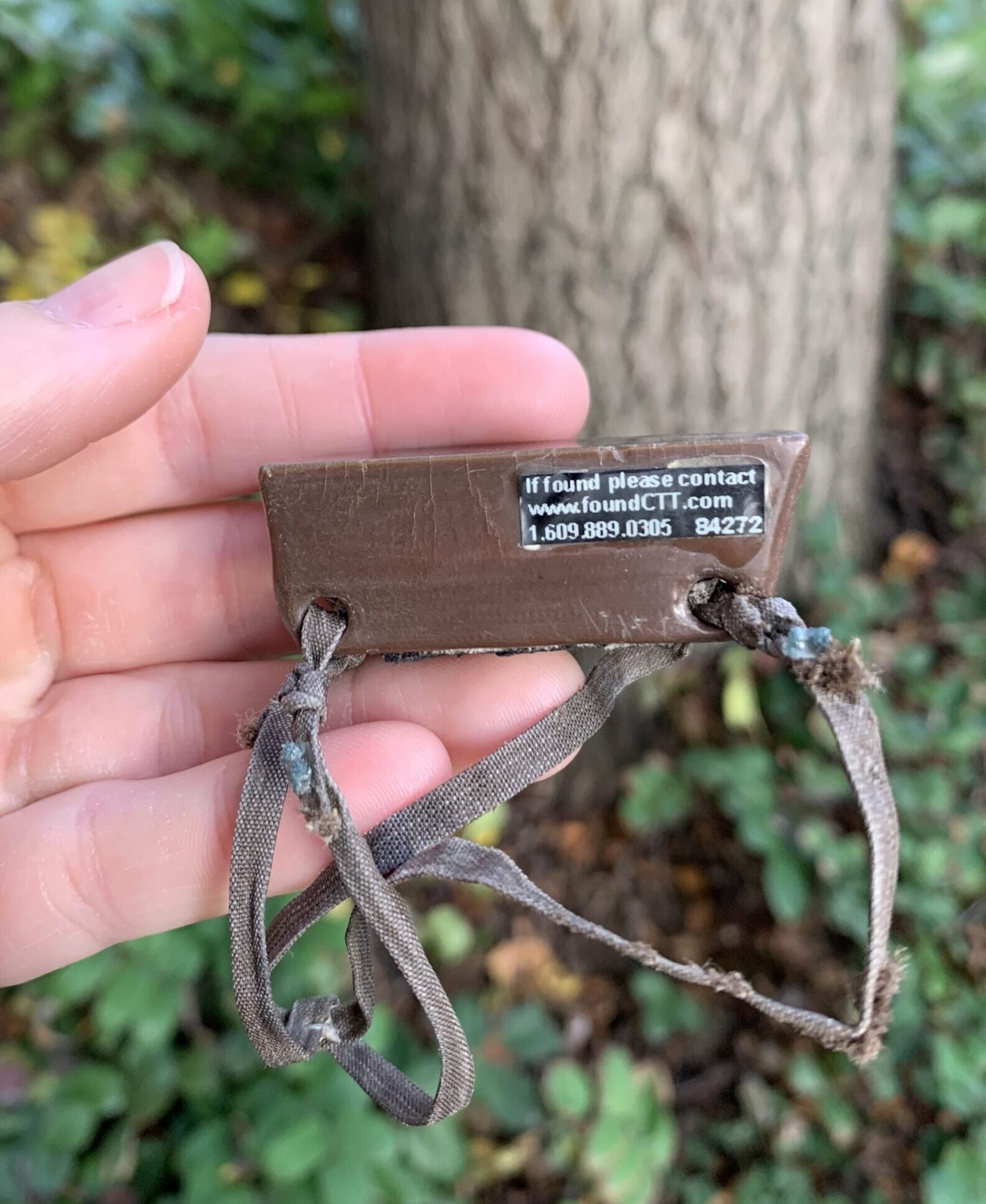
Utilizing GPS transmitter data, I plan to examine the movement of American Goshawks throughout their yearly cycle.
This will include where they choose to occupy breeding territories, where dispersing adults are moving, and what this means for current forest management and goshawk conservation in the Great Basin.
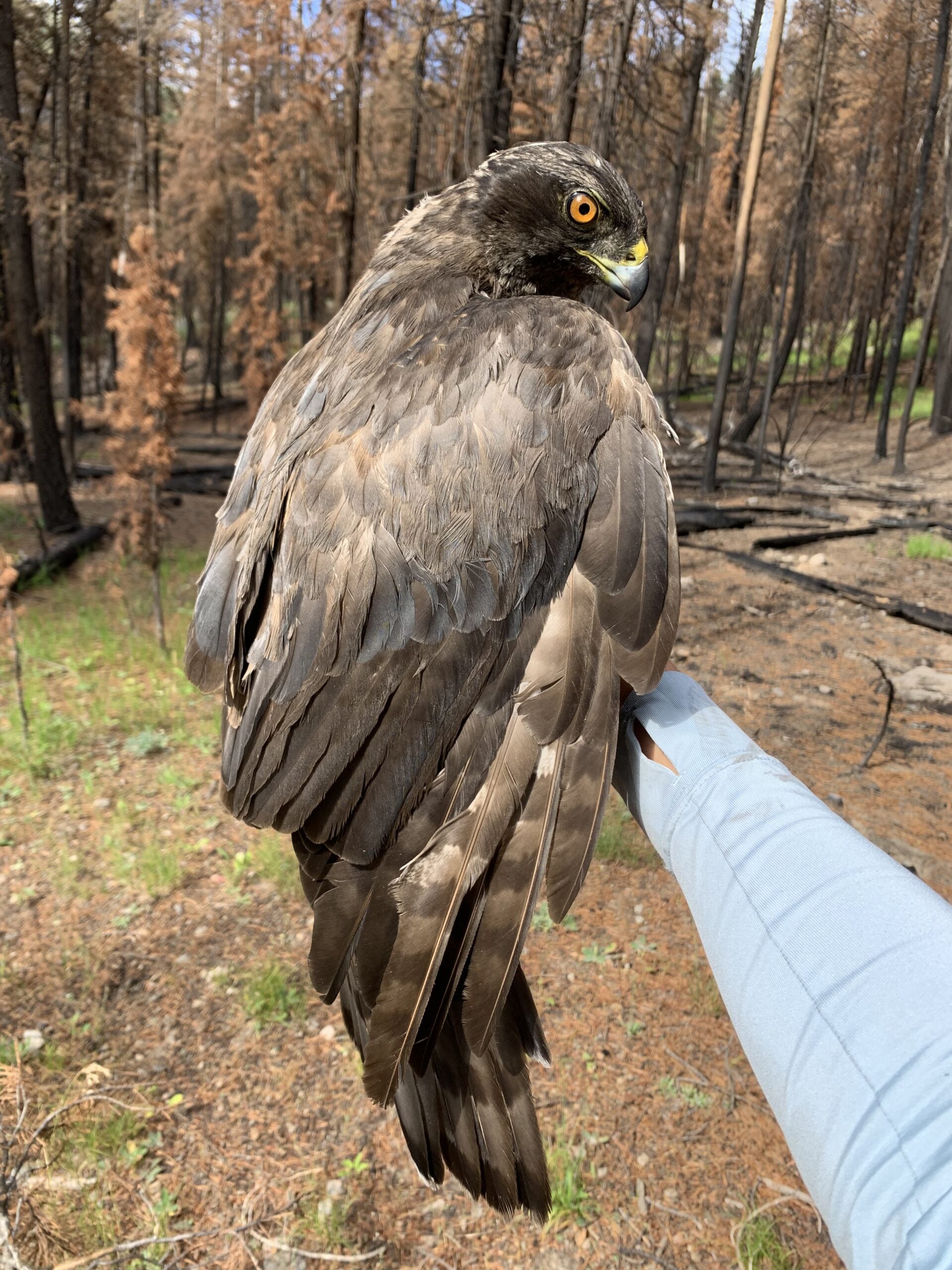
In addition to studying adult goshawk movement ecology, I also plan to study the microclimate conditions that goshawks experience at the level of the nest by placing thermologgers to remotely record data like temperature and relative humidity.
Nest data on this scale has never been collected before in this study area.
This will give us insight into questions such as – how warm does it actually get in the canopy where goshawks nest? What sun exposure do goshawk nestlings experience as canopy cover changes? How does this nest microclimate data influence goshawk nest success, likelihood of future occupancy, and long-term breeding trends in goshawk territories?
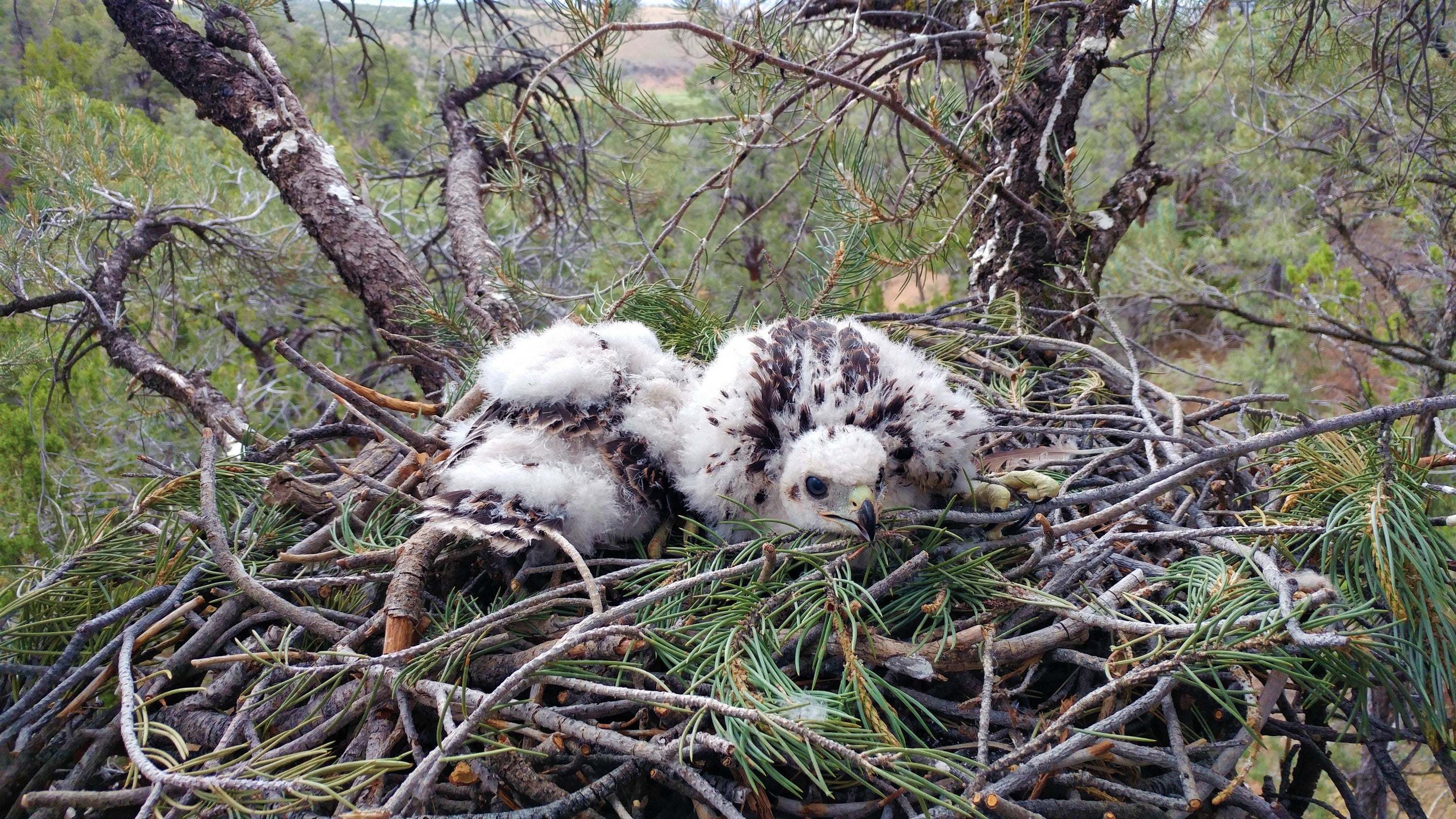
Collecting data with thermologgers would allow us to make more informed explanations about what mechanisms might be driving nest failures and decreased occupancy/productivity rates.
Support Our Goshawk Conservation Efforts
Transmitters and thermologgers needed for this project are a significant expense, and our research team has put together a fundraiser to help cover the costs. T-shirts and sweatshirts are available for purchase in IBO’s Bonfire shop, with artwork designed by a fellow Lucky Peak alum, Emma Regnier (@falcofous on Instagram).
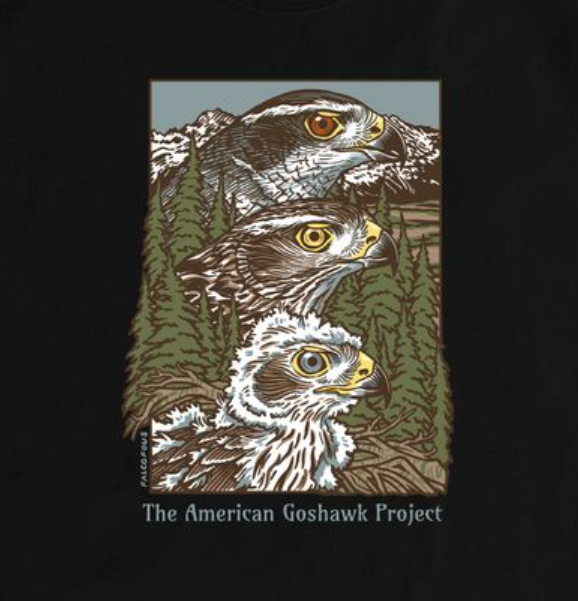
Research like this is not possible without your help, and we’d like to invite you to invest in this great project! Beyond the Bonfire fundraiser, we are also seeking any individuals or organizations who may be interested in sponsoring a goshawk by covering the costs of one transmitter. Depending on the specific unit, cellular or satellite units range $800-$1200 per unit plus annual data fees. By sponsoring a goshawk, donors can symbolically “name” a bird, receive special updates on that specific bird…
…and have the opportunity to join us for a day in the field!
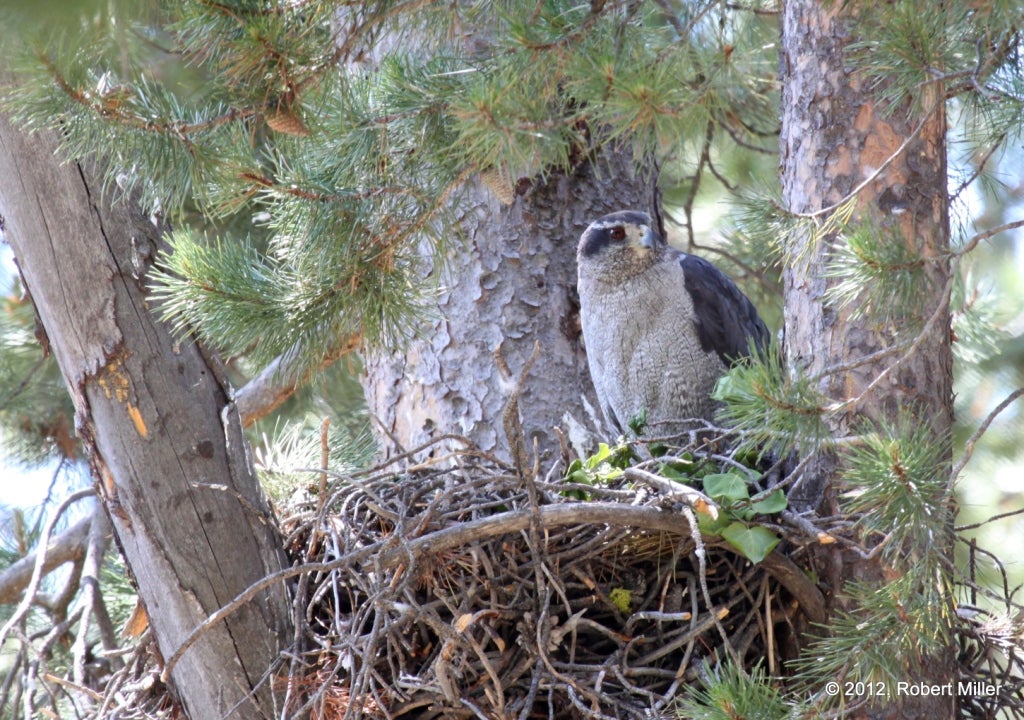
Stay Informed and Support the Project
You can stay up to date on the American Goshawk Project through Facebook (IBO Team Goshawk), and on Instagram (@americangoshawk)! Thank you for your interest and support!
This article is part of our 2023 end of the year newsletter! View the full newsletter here, or click “older posts” below to read the next article.
Make sure you don’t miss out on IBO news! Sign up to get our email updates.